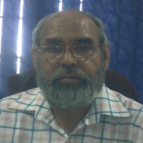International Journal of Information Technology and Computer Science (IJITCS)
IJITCS Vol. 7, No. 6, 8 May 2015
Cover page and Table of Contents: PDF (size: 308KB)
Smart PCS Based System for Oxygen Content Measurement
Full Text (PDF, 308KB), PP.45-51
Views: 0 Downloads: 0
Author(s)
Index Terms
PCS (Photo Catalytic Sensor), Photo catalysis, Oxygen, Hardware, Microcontroller
Abstract
This paper presents the performance analysis of smart PCS based system for an accurate oxygen content measurement in the aqueous electrolyte solution. The system intends to measure the photo catalytic activity of the PCS which is sensitive to O2 by integrating the software and hardware design technique for more accurate results. The threshold voltage of the PCS changes due to photo catalysis process causing fluctuations in the PCS readout which is sensed by the microcontroller via an inbuilt 10 bit A/D converter. The digitized signal is processed and converted into corresponding value of O2 content. The proposed digital system is fast as compared to conventional flow injection analysis which is tiresome and time consuming job. The approach for this system relies on the fast operation of PCS which operates under sub threshold conditions and reduced computation time. The system is more user friendly and the outcomes of simulation are fairly in agreement with the theoretical estimations. The system is highly favourable for water quality monitoring applications due to reduced response time.
Cite This Paper
Vaibhav Bhatia, Pawan Whig, Syed Naseem Ahmad, "Smart PCS Based System for Oxygen Content Measurement", International Journal of Information Technology and Computer Science(IJITCS), vol.7, no.6, pp.45-51, 2015. DOI:10.5815/ijitcs.2015.06.06
Reference
[1]J. Liu, L. Bjornsson and B. Mattiasson "Immobilised activated sludge based biosensor for BOD measurement," Biosensors and Bioelectronics, vol 14 No12, 2000, pp. 883-893.
[2]L. Ma, J. SH. Cui, X. H. Wang,” BOD Biosensor for Seawater Using Bacillus Licheni Formis”, Journal of Hebei University of Science and Technology, Vol 25 No 4, 2004, pp.83-85.
[3]Z. Qian, T.C. Tan , "Response characteristics of a dead-cell BOD sensor," Water Research, vol 32 No 3, 1998, pp.801-807.
[4]Y.C. Kim, S. Sasaki , K. Yano, K. Ikebukuro, K. Hashimoto and I. Karube “Photo catalytic sensor for the determination of chemical oxygen demand using flow injection analysis”, Analytica Chimica Acta, Vol. 432 No. 2, 2001, pp. 59-66.
[5]P. Whig and S.N. Ahmad, “Simulation of Linear Dynamic Macro Model of Photo Catalytic Sensor in SPICE”, COMPEL, Vol. 33 Issue 1/2, 2013.
[6]P. Whig and S. N. Ahmad, "Development Of Economical Asic For PCS For Water Quality Monitoring", Journal of Circuits, Systems, and Computers Vol. 23 No. 6 , 2014.
[7]APHA, "Standard methods for the examination of water and wastewater", American Public Health Association, 1999, Washington DC.
[8]I. Vyrides and D.C. Stuckey "A modified method for the determination of chemical oxygen demand (COD) for samples with high salinity and low organics", Biores Technol, Vol. 100, 2009, pp. 979-982.
[9]D.D.C. Freire and G.L. Sant'anna “A proposed method modification for the determination of cod in saline waters", Environ Technol, vol. 19, 1998, pp. 1243-1247.
[10]J. Herrmann, C. Guillard, J. Disdier, C. Lehaut, S. Malato, J. Blanco, “New industrial titania photocatalysts for the solar detoxification of water containing various pollutants, Appl. Catal. B: Environ. 35, 2002, pp. 281-294. (Pubitemid 34107953)
[11]N. S. Abuzaid, M.H. Al-Malack, A.H El-Mubarak” Alternative Method for Determination of the Chemical Oxygen Demand for Colloidal Polymeric Wastewater”, Bull. Environ. Contam. Toxicol. , Vol. 59 Issue 4, 1997, pp. 626-630.
[12]G.A. Penuela and D. Barcelo ” Photosensitized degradation of organic pollutants in water: processes and analytical applications”, Trends Anal. Chem., Vol. 17, Issue 10, 1998, pp. 605–612.
[13]M.R. Hoffmann, S.T Martin, W. Choi, and D.W Bahnemann “Environmental applications of semiconductor photocatalysis”, Chemical Reviews. 95 (1), 1995, pp. 69-96.
[14]A. Sobczynska and A. Sobczynski “The application of photocatalysis on semiconductors in environmental protection”, Polish Journal of Applied Chemistry, Vol. 38, 1994, pp. 25-33.
[15]A. J. Hoffman, E. J. Carraway, and M. R. Hoffmann ”Photocatalytic Production of H2O2 and Organic Peroxides on Quantum-Sized Semiconductor Colloids”, Env. Sci. Tech. 28(5), 1994, pp. 776-785.
[16]B.V. Pecharroman, A. Izquierdo-Reina and M.D. Luque de Castro“Flow injection determination of chemical oxygen demand in leaching liquid”, Analyst, 124, 1999, pp. 1261-1264.
[17]N. Serpone, I. Texier, A.V. Emeline, P. Pichat, H. Hidaka and J. Zhao, “Post-irradiation effect and reductive dechlorination of chlorophenols at oxygen-free TiO2/water interfaces in the presence of prominent hole scavengers”, Journalof Photochemistry and Photobiology A: Chemistry, Vol. 136, 2000, pp. 145-155.
[18]S. Martinoia, M. Grattarola and G. Massobrio “Modeling non-ideal behavior in sensitive FETs with SPICE”, Sensors and Actuators B, Vol. 7, 1992, pp. 561-564.
[19]J. T. Kong and D. Overhauser “Method to improve digital MOS macro- model accuracy”,IEEE Transactions on Computer-Aided Design of Integrated Circuits and Systems, Vol. 14, No. 7, 1995, pp. 868-888.
[20]Microchip, “28/40/44-Pin Enhanced Flash Microcontrollers,” PIC16F877A datasheet, Revised 05 Feb 2013.
[21]S.A. Campbell. et al.,“MOSFET transistors fabricated with high permitivity TiO2 dielectrics”, IEEE Transactions on Electron Devices, Vol. 44 No. 1, 1997, pp. 104-109.


